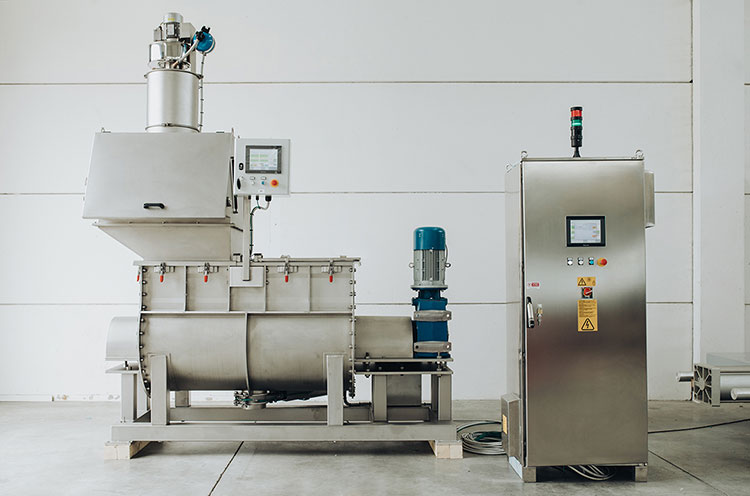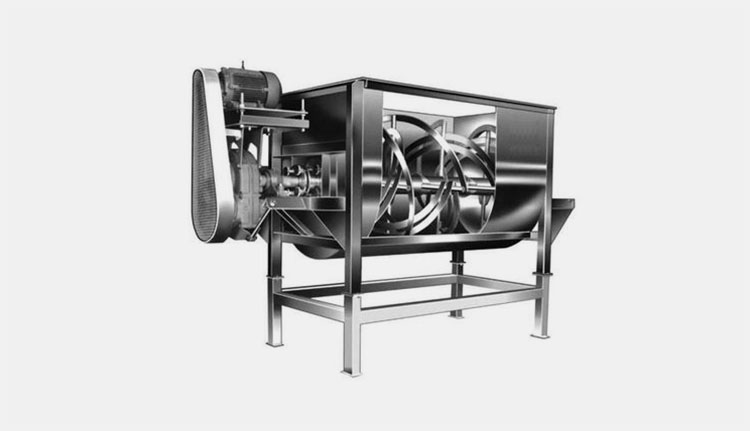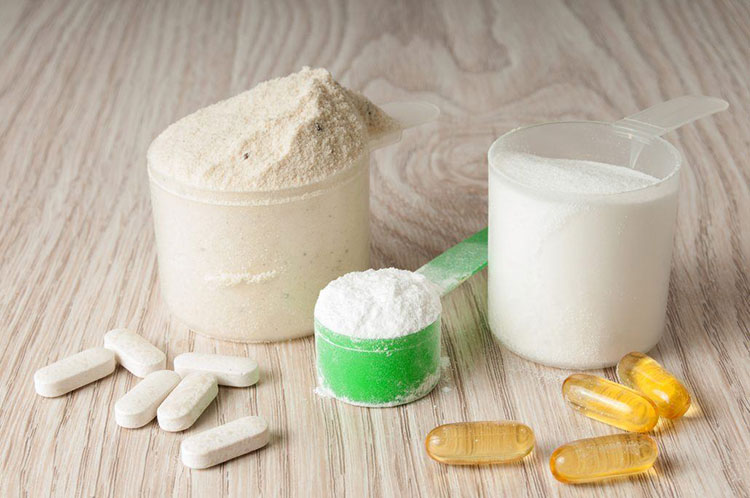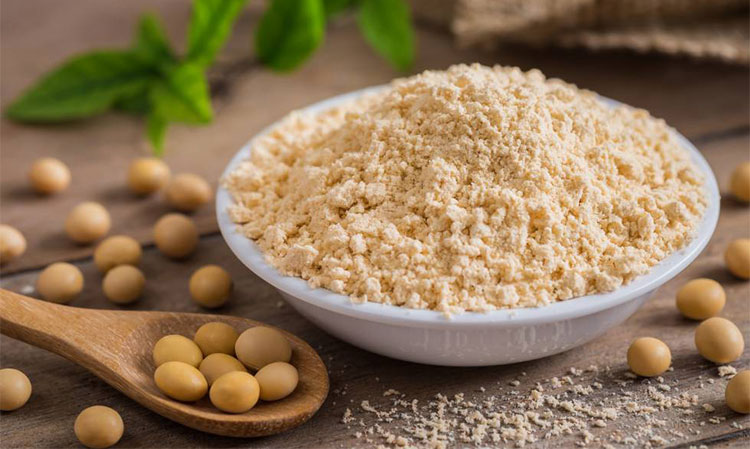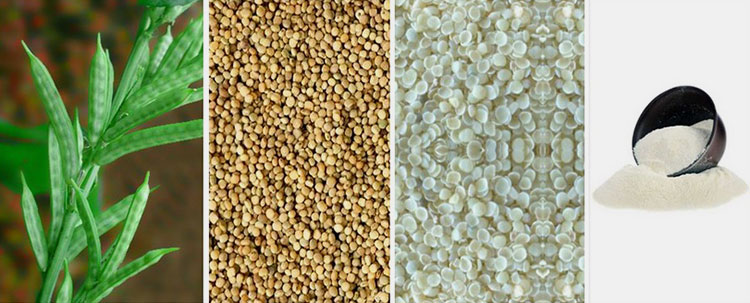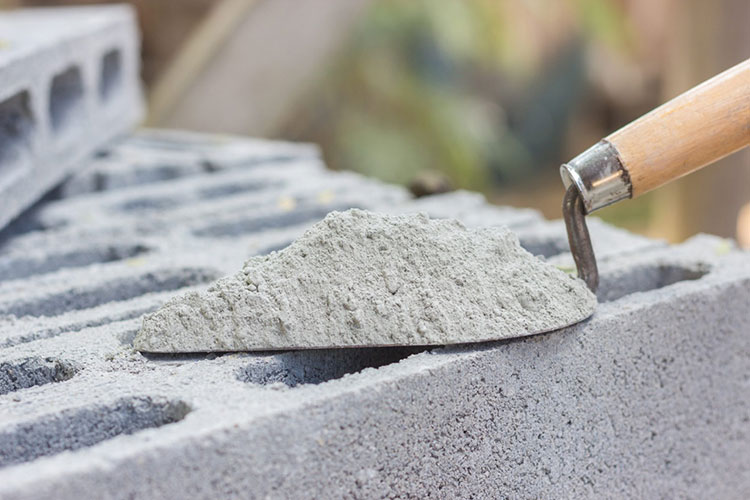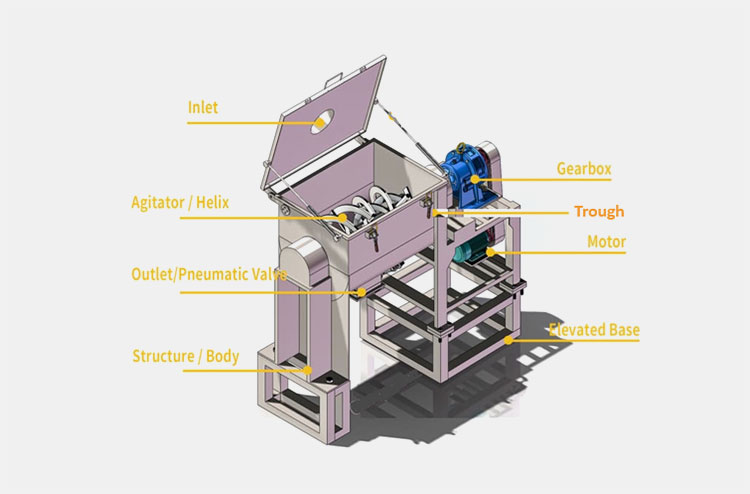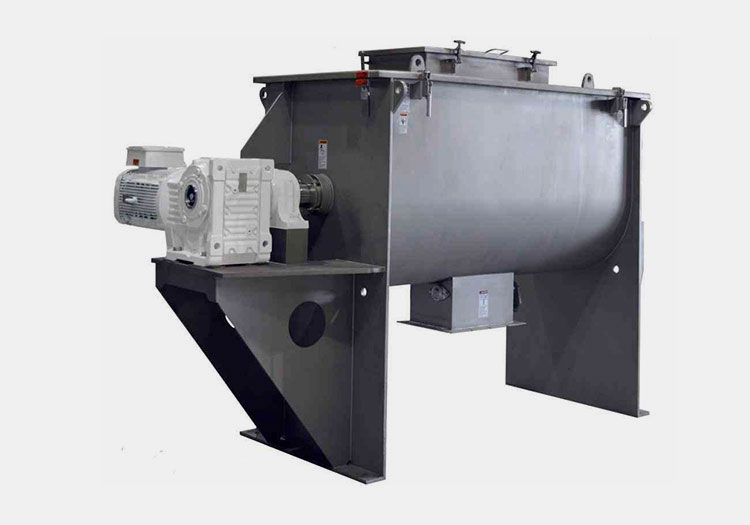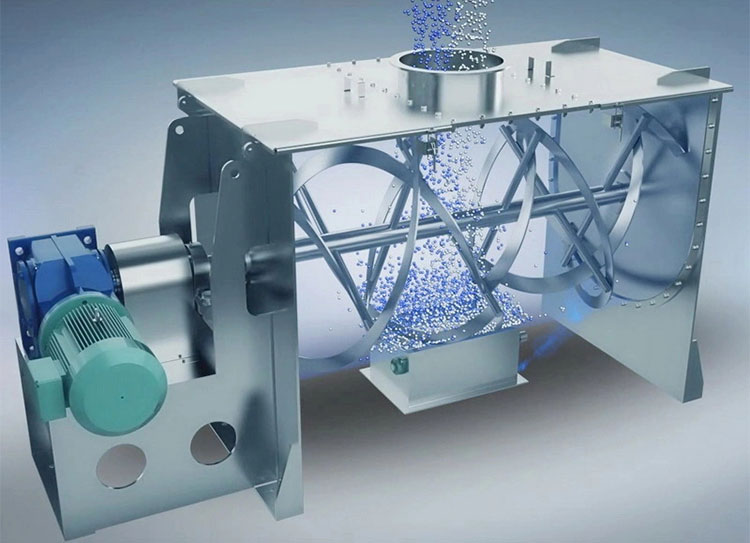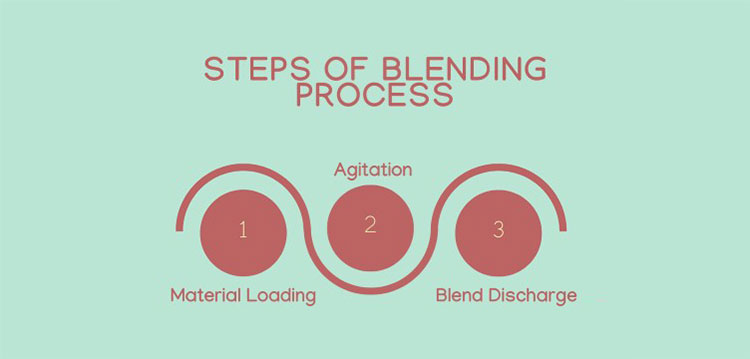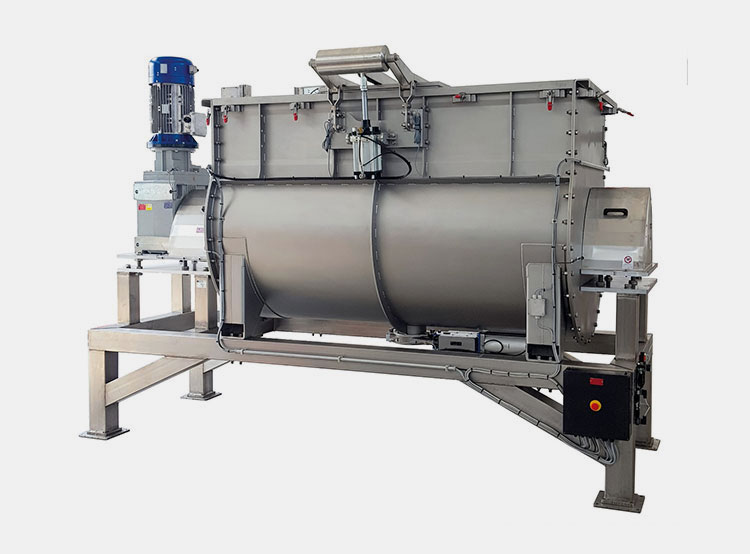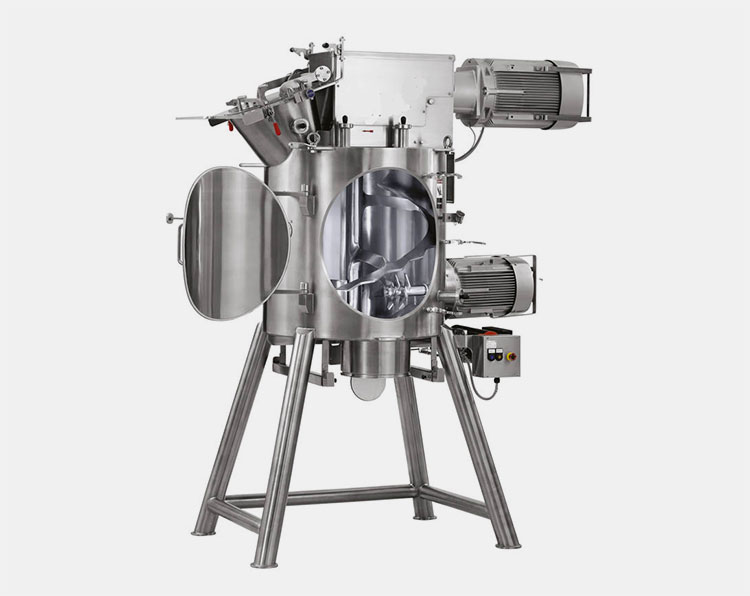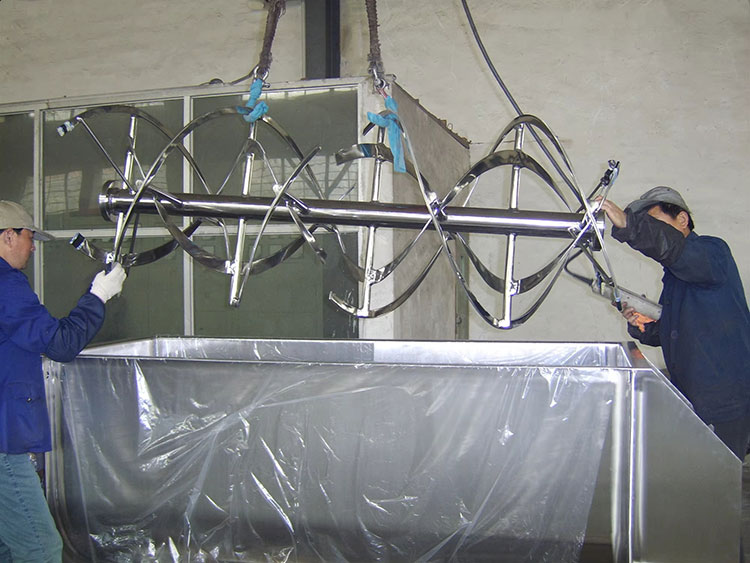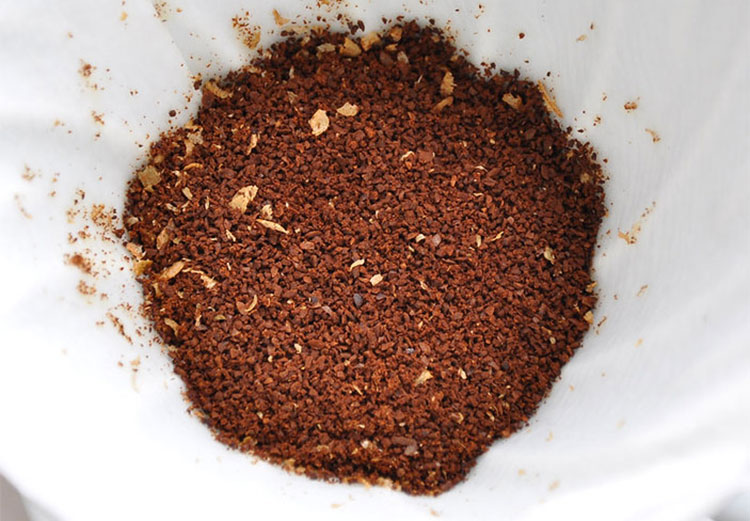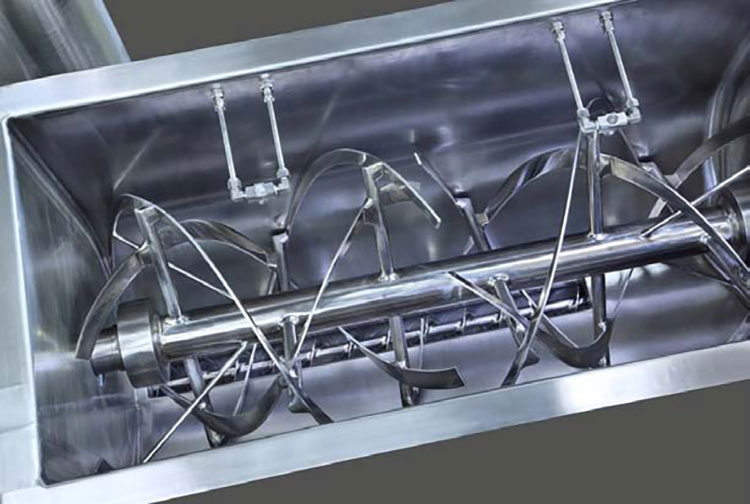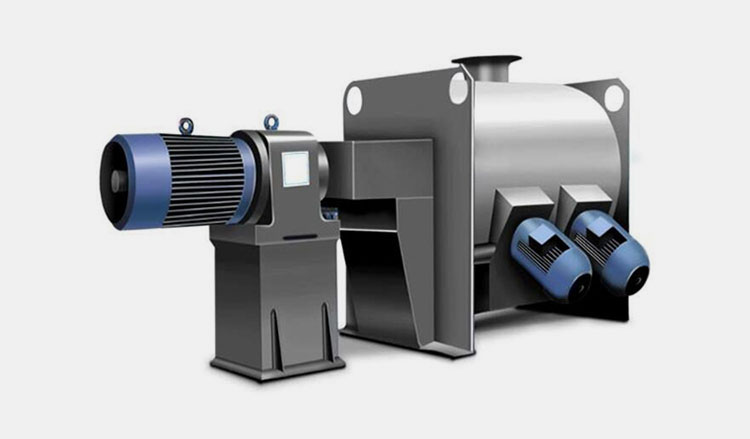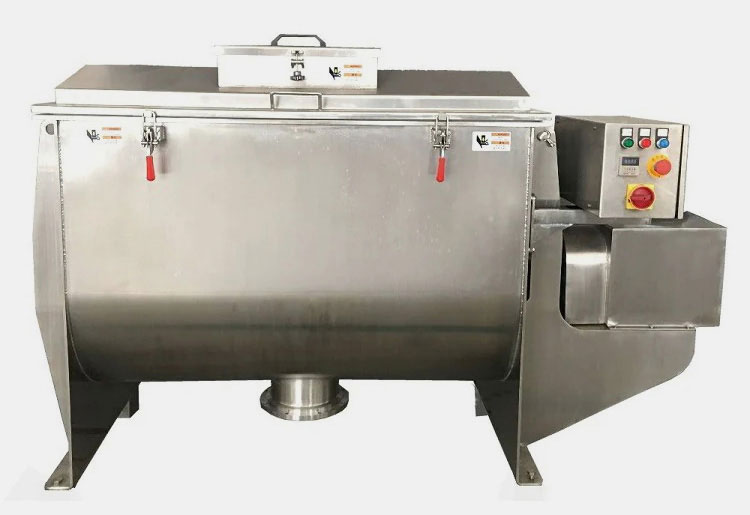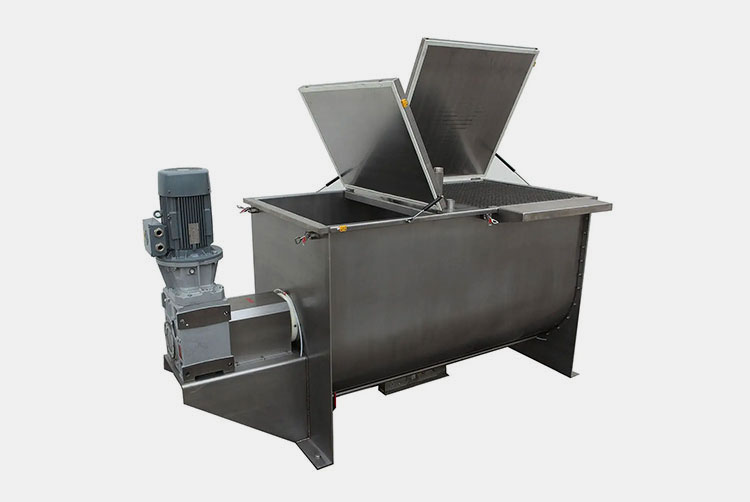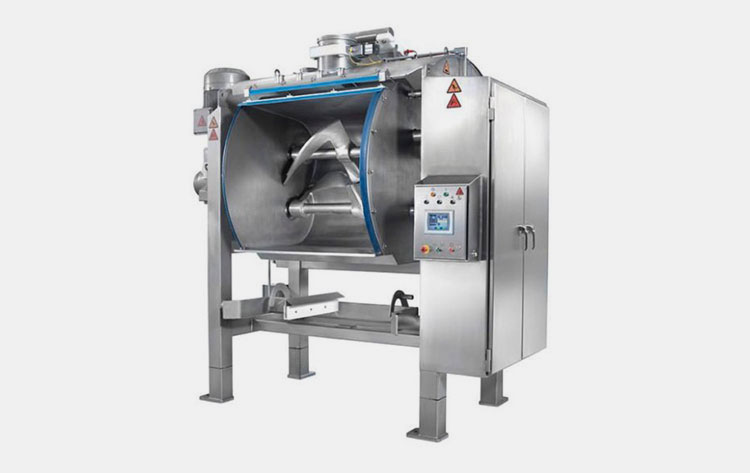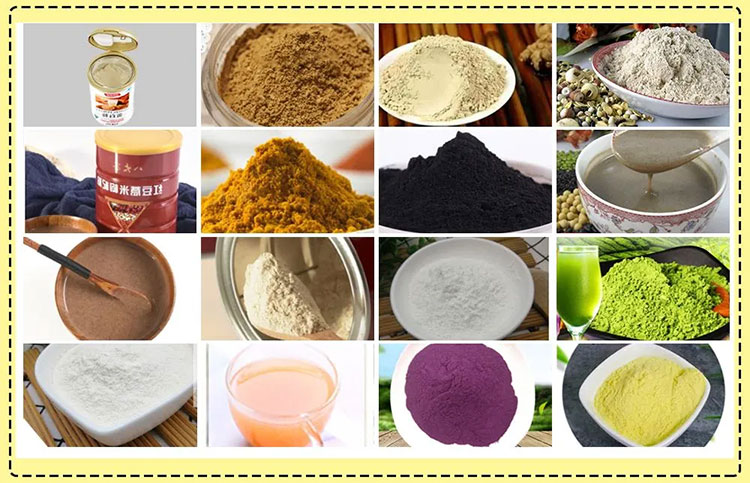Ribbon Mixer: The Complete FAQ Guide in 2025
Are you trying to get your manufacturing process to produce a flawlessly homogenous blend? Are you unsure if ribbon mixers are the best option for your requirements despite having heard about them? What are the most important things to consider when running or maintaining a ribbon mixer? You're not the only one if these queries seem familiar to you.
Ribbon mixer is an essential element in many different industries, particularly food, chemical, medicine, and engineering. Their main job is to combine ingredients into a homogenous mixture so that the finished result is consistent. The ribbon mixer provides an effective and dependable option for mixing powders, grains, or pastes.
Still, there can be a lot of queries regarding the use, upkeep, and operation of this equipment for people unfamiliar with it or considering its purchase.
This comprehensive FAQ guide is designed to address your most significant inquiries and assist you in managing the complexities of ribbon mixers, providing you with the clarity and confidence you need to make insightful decisions. So, let’s start the journey together!
1.What is a Ribbon Mixer?
Ribbon Mixer
A ribbon mixer is a kind of industrial blending apparatus used to combine powders, granulates, and occasionally pastes into a uniform slurry. The device comprises a revolving stirrer with ribbon-like rotors and an inclined U-shaped pan.
The rotors have a spiral arrangement with one set pushing the materials in one way while the other set in a counter route. This counter-directory movement guarantees a sheer blending of ingredients.
Due to efficiently processing huge material volumes and producing homogenous blends, ribbon mixers are frequently employed in multiple industrial sectors, including food, medical care, chemicals, and construction.
2.What Key Benefits Can a Ribbon Mixer Provide to Your Business?
Ribbon mixer is a vital element in the majority of industrial production lines. It offers several key benefits that help in many aspects of growing a business. Some of the benefits of ribbon mixers are described below:
| Uniform Mixing
Ribbon mixers offer unparalleled homogeneity in quick time. By continually transferring ingredients in various directions, the combating ribbons enable complete mixing, reducing dead patches and guaranteeing a consistent blend. |
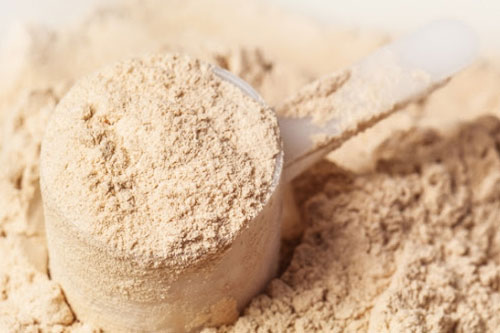 |
| Versatility
The flexibility and versatility of ribbon mixers allow them to handle multiple types of materials, like powders, granules, pellets, and pastes. The device is ideal for several applications and therefore, widely employed across industries. |
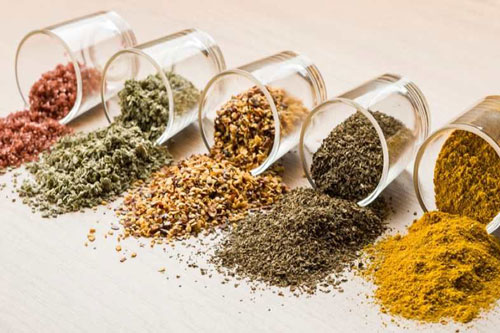 |
| Efficient Performance
Ribbon mixers are renowned for their effectiveness in swiftly and efficiently combining ingredients. Because of the ribbon agitator's rapid stirring cycle, operations are shortened and manufacturing output is increased. |
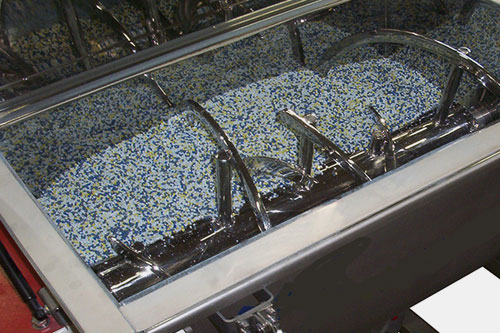 |
| Maintenance Ease
The advanced versions of ribbon mixers have straightforward structures. This feature provides companies with the ease of cleaning and maintenance of the device. In industries like food and medical care, hygienic equipment is critical and therefore it must be regularly maintained. |
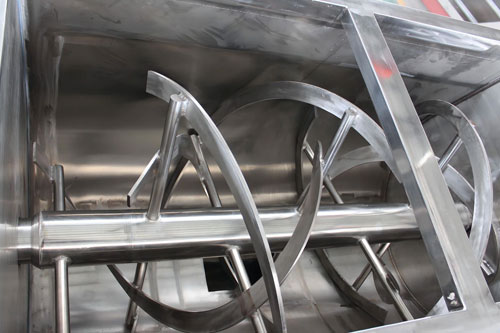 |
| Scalability
Ribbon mixers come in various designs, sizes, and configurations. These varied structural arrangements make them scalable to varied manufacturing facilities. Businesses may choose the mixer type that best meets their specific production needs because of this versatility, regardless of the size of their business. |
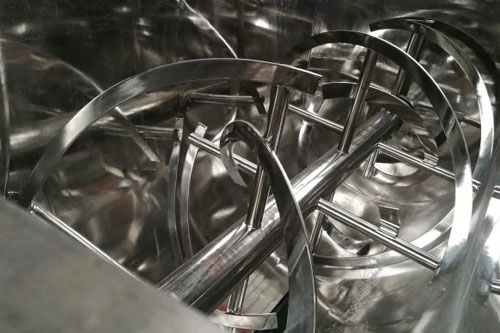 |
3.What is the Role of a Ribbon Mixer in Various Industries?
The ribbon mixer offers incredible benefits, including versatility and mixing uniformity. These features have made it a popular choice for several industrial applications. The major industrial sectors utilizing ribbon mixers for several applications are:
Pharmaceutical Industry
Applications of the Ribbon Mixer in the Pharmaceutical Industry
Ribbon mixers are employed in the pharmaceutical industry to unify various powdered and granulated substances for the production of tablets, capsules, and other dosage forms. The device offers the unparalleled homogeneity required for consistent dosing and potency of medicinal goods.
Food Processing Industry
Applications of the Ribbon Mixer in the Food Processing Industry
The ribbon mixer is extensively used in the food processing industry for blending various ingredients, like tea, coffee, flour, sugar, condiments, instant drinks, and dough. Ribbon mixers are an ideal alternative for preserving the quality and consistency of food products due to their consistent and efficient melding capabilities.
Agricultural and Chemical Industry
Applications of the Ribbon Mixer in the Agricultural & Chemical Industry
The versatility of ribbon mixers allows them to mix various chemical compounds, from small powders to thicker mixtures. Various powdered and granulated chemicals, such as fertilizers, detergents, dyes, and pigments, are blended in ribbon mixers.
Cosmetics Industry
Applications of the Ribbon Mixer in the Cosmetics Industry
Several cosmetic and personal care items are gently and uniformly blended in ribbon mixers to get the desired texture and quality. These items include face powders, eye shades, talcum, and other cosmetic materials.
Construction Industry
Applications of the Ribbon Mixer in the Construction Industry
In the development sector, ribbon mixers are utilized to combine dry supplies including grouting compound, mortar, plaster, and limestone. Ribbon mixers are appropriate for processing hefty and rough building supplies due to their strong architecture and high-capacity blending capabilities. They support the maintenance of a uniform mix, which is necessary for the building elements' strong foundation.
4.What Are the Key Functional Components of a Ribbon Mixer?
The ribbon mixer has a straightforward structural design. The key components of a ribbon mixer are discussed below:
Components of a Ribbon Mixer
| Components | Description |
| Inlet | It is the entry point, typically positioned at the top, where a material is fed into the device. It can be tailored with a dust cover. Some devices have more than one inlet to speed up the process, assisting in multiple component entries. |
| Agitator/Helix | It is the central mixing part of the ribbon mixer, comprising a shank with ribbon-like rotors arranged in a helical or spiral pattern. The rotors are designed such that their two sets push the material in opposing directions, ensuring homogenous blending. The agitators are of various designs based on the device model or particular application. |
| Outlet/Pneumatic Valve | The outlet is the exit point where the material blend gets discharged from the device. It is usually located at the bottom to expedite the discharge. In certain device models, a pneumatic valve is present that regulates the outlet’s opening and closing. The valve can be operated manually or mechanically. |
| Trough/Pan | It is the chamber of the device where materials get mixed. It is shaped to facilitate the blending. The typical designs of pans are U-shape or W-shape, allowing the agitator to rotate effectively. |
| Gearbox | It is the electrical part that joins the motor and agitator rod. It modulates the motor's speed and torque to the appropriate values required for efficient mixing. The gearbox ensures the optimal rotating speed of the shank for uniform mixing. |
| Motor | Ribbon mixers are powered by motors, which provide the agitator with the necessary rotational force. The motor’s power efficiency varies with different device models, designed for specific materials and processing volumes. |
| Elevated Base | A structural support that lifts the device above the ground, giving it stability. It eases the ingredient’s feed and discharge of the finished product from the exit. |
| Structure/Body | The device’s structure is usually made of highly durable stainless steel to ensure its greater life expectancy and maintenance ease. |
5.What Are the Required Conditions For a Ribbon Mixer?
Required Conditions for a Ribbon Mixer
Ribbon mixers need particular parameters about the combined substances, the working set, and the device specifications to guarantee maximum effectiveness and productivity. The following are the required conditions for efficient working:
- Ribbon mixer requires a clean, dry, and vented space for operation to prevent contamination.
- A smooth and stable floor space is also essential.
- An uninterrupted power supply is critical to achieve the desired results.
- Materials with similar bulk density values will form a uniform blend.
- The ribbon mixer works best with materials having low to moderate moisture content. Highly moisture substances will result in clumping, leading to difficulty in the process.
- The basin/pan should be filled or loaded with the material up to 40-70% for consistent outcomes.
- The mixing duration should be carefully regulated to get the desired homogeneity.
- The agitator’s speed must be controlled based on the material type. Usually, faster speeds are preferred for dry substances while gentle mixing is required for sensitive constituents.
- Installing effective dust control measures is essential for maintaining a clean environment.
6.What is the Operational Principle of the Ribbon Mixer?
The operational principle of a ribbon mixer is based on its efficient blending properties using a spiral agitator that unifies the material in a stainless steel pan. The distinctive structure and movements of ribbon blades guarantee the meticulous blending of constituents via combined effects of convective and shear blending.
Blending Mechanism
The two combined blending forces established in the ribbon mixer assist in the formation of a consistent blend:
| Convective Blending
The rotary motion of the agitator results in the upright and sideways movements of the material within the pan. This convective action enables the mass movement of the ingredients, making different parts of the blend effectively adhere. |
Shear Blending
The close gaps between the blades and the pan walls develop a shearing action, forcing the item against the wall. This crushing force guarantees that small fragments are dispersed uniformly throughout the blend by dissolving lumps. |
Blending Process
Material Loading
Materials are loaded into the device through an inlet positioned atop. Different constituents are added simultaneously or sequentially as per the formulation guidelines. The material level within the pan is usually maintained at 40-70% to guarantee effective blending.
Agitation
The device is then turned ‘ON’ and the motor starts moving the agitator blades via the gearbox at the regulated pace, creating a uniform mix.
Blend Discharge
Once the desired homogeneity is achieved, the blend is discharged from the pan through an outlet typically placed at the bottom. For batch-to-batch uniformity and simplicity of maintenance, the outlet's layout permits full basin drainage with the least amount of sediment.
7.What Types of Ribbon Mixers Are Available?
Ribbon mixers are available in different configurational designs to satisfy certain processing demands. Here are the primary types of ribbon mixers based on orientation:
Horizontal Ribbon Mixer
Horizontal Ribbon Mixer
It is the most frequently employed type of ribbon mixer, consisting of a horizontally structured pan/basin. The pan contains a horizontal agitator with spiral blades.
Product feeding and discharging are made simple by the horizontal arrangement. An agitator consisting of a single or double helical ribbon that revolves on the horizontal plane can be installed on the basin.
This kind of configuration ensures an effective blending process and is ideal equipment for mixing powders, granules, and pastes.
Vertical Ribbon Mixer
Vertical Ribbon Mixer
The vertical ribbon mixer has a vertically aligned barrel-shaped or conical pan, containing a vertical ribbon-bladed agitator.
This type of structural design is suitable for limited factory space or requiring a gentle blending operation. The vertical agitator forces the material to move in an upright direction. The gentle mixing provided by this equipment is helpful for sensitive and thermos-labile materials.
8.What maintenance tips are required to improve the efficiency of the ribbon mixer?
Ribbon Mixer Maintenance
It is crucial to regularly maintain the ribbon mixer for its long life expectancy and efficient performance. Here you will find some key maintenance tips for the ribbon mixer:
Cleaning:Routine cleaning of the ribbon mixer is essential to avoid residue accumulation within the pan and optimize the ribbon blades' performance for a long period.
Lubrication:Properly grease the dynamic parts of the ribbon mixer, such as the shaft, motor, and gearbox, to enhance efficiency and reduce abrasiveness.
Inspection:Organize periodic inspections of the device. Check for any damaged, torn, or fractured components. Immediately replace the impaired components to ensure optimal performance and maintain efficiency.
Alignment Validation:Remember to validate the alignment position of the agitator and blades to protect the blades and walls of the pan from being damaged.
9.What Are the Frequently Encountered Problems while Using a Ribbon Mixer and How to Resolve Them?
A ribbon mixer may present certain problems during its operation that impact product quality, equipment life expectancy, or mixing effectiveness. The following are some common issues with utilizing a ribbon mixer along with solutions:
Inconsistent Mixing
Inconsistent Mixing
Ineffective mixing can cause components to be distributed unevenly, affecting the quality of the finished product. Inappropriate feeding, an ineffective agitator pace, or variations in the material's density and particle size are frequently the root causes of this problem.
Solution: Ensure appropriate feeding of materials. Regulate the agitator’s pace according to the material properties. Pre-sieve the materials to get uniform density and particle-sized ingredients.
Sticking of Materials to Different Components
Sticking of Materials to Trough & Ribbon Blades
Materials may stick to the trough walls or the ribbon agitator, which can cause contamination, less effective blending, and challenging cleaning. The possible causes include inadequate agitator speed, lack of maintenance, or damaged pan or blades.
Solution: Adjust the mixing time and agitator speed to the desired level. Conduct routine maintenance of the device. Consider immediate replacement of the damaged parts.
Overheating of Electrical Components
Overheating of Electrical Components
If the electrical components, such as the motor or gearbox, are overheating, it may be due to continuous operation, overloading, or lack of lubrication. It can cause lowered efficiency and ultimate breakdown.
Solution: Don't operate the mixer at unreasonably high rates or overload it. Ensure well-operated environmental conditions for the mixer, including proper ventilation. Regularly lubricate the dynamic parts of the device.
Material Leakage
Material Leakage from the Device
The material may leak from the equipment. It can occur from the discharge points, sealing areas, or any other location. It may result in material loss and possible contamination.
Solution: Inspect and repair or replace the impaired seals and pneumatic valves. Make sure all the device parts are properly aligned.
10.What Factors Should You Consider While Purchasing a Ribbon Mixer?
It is crucial to consider several things before purchasing a ribbon mixer to ensure it fulfills your demands and improves your manufacturing workflow. These are the important things to think about:
Characteristics of Materials
Characteristics of Materials – Picture Courtesy: Syntegon
You should know what kinds of materials you want to process. Opt for the device model that specifically meets your material properties and can efficiently process them. Different materials have different characteristics and require unique mixing parameters.
Budget
Budget
Assess your budget and device purchasing, operational, and maintenance expenses. Consider the device that is affordable yet efficiently processes various substances.
Device Capacity
Device Capacity
Ascertain the dimensions of every batch that you plan to blend. Ribbon mixers are available in a variety of sizes, from little laboratory models to massive industrial models. Select a mixer that can handle the batch size you intend to process effectively.
Device Construction
Device Construction
The ribbon mixer’s design and construction largely influence the performance and efficiency of the device. Select the mixer that suits your material characteristics and blending needs. Moreover, the construction should also be compatible with your product. Stainless steel ribbon mixers are usually preferred for their durability, cleaning ease, and corrosion resistance properties.
Customization
Customization
A ribbon mixer with customized features is ideal for purchase. It allows you to process different materials effectively according to your needs. Long-term value may be achieved with a flexible mixer that can accommodate a larger capacity or a variety of materials.
Conclusion
To conclude, a ribbon mixer is an indispensable piece of equipment across various industries, including food and medical care. It offers remarkable benefits, like versatility, homogenous blending, and product consistency. The value it offers to businesses has a greater impact on business growth. There are numerous models and configurational designs available on the market. Selecting an effective ribbon mixer that can satisfy your production demands is essential. So, you need the right place where you can get assistance and information regarding this incredible device. Allpack is a reputed and trusted manufacturing company, offering high-quality equipment. Feel free to contact us!
Don't forget to share this post!
CONTACT US
Tell us your raw material and project budget to get quotations within 24 hours.
WhatsApp Us: +86 181 7101 8586
The Buyer's Guide
